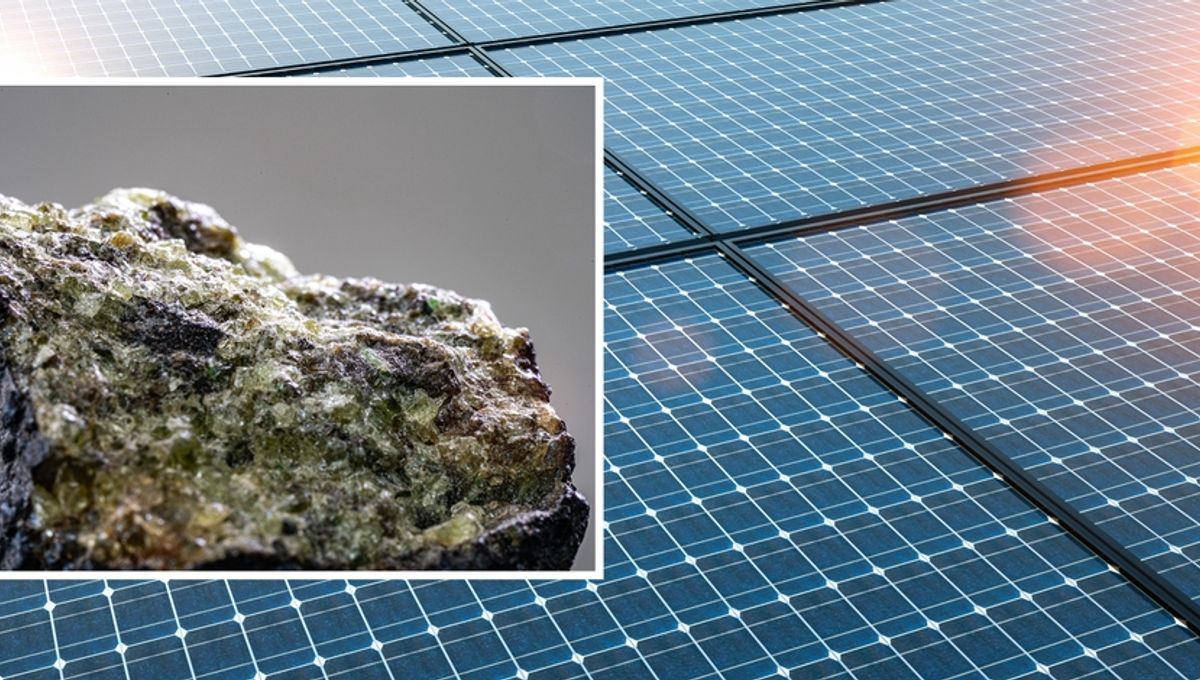Perovskite solar cells have developed extraordinarily fast, going from a curiosity to the hottest area of solar research in the space of a few years. After overcoming a series of barriers one major problem has remained; their durability. A paper in Nature Materials reports a novel solution. It comes less than a fortnight after two other potentially equally significant papers, one providing an alternative solution to the same problem and the other indicating perovskites are even more exciting than anyone knew.
The vast majority of photovoltaic cells in operation in the world are made using silicon. Although the raw material is among the cheapest and most abundant on Earth, the high temperatures needed to produce ultra-pure polysilicon require substantial energy input. Despite the spectacular fall in prices for silicon cells over the last 50 years, it is widely believed that to go much further we will need something different. Many alternatives have been tried, and some have proven better than silicon in certain niches, but only perovskites have looked likely to become a major source of power in the world.
Perovskites are named after the natural material whose basic structure they mimic. They are made up of calcium, oxygen, and titanium – all very cheap elements – doped with metals. The quantity of metals used is so small that manufacturing costs should be very low. Moreover, where silicon cells are good at collecting energy from the red part of the spectrum but bad at the blue, perovskites can be tuned to suit desired wavelengths.
Ion migrations have posed a problem for previous efforts to commercialize perovskite cells because the migrating ions make the material unstable and lead to long-term breakdown. Even very cheap solar cells are not much use for most purposes if they don’t last long. A team led by Professor Aram Amassian of North Carolina State University have now described a way to “corral” ions within perovskites to control these migrations.
“We have not found a way to prevent ions from moving through perovskite materials, but we have found that it is possible to steer these ions into a safe conduit that does not impair the material’s structural integrity or performance,” Amassian said in a statement. “It’s a big step forward.”
Perovskites are produced as a series of crystals or “grains”, which touch at grain boundaries. “Grains are better protected from impairment when the ions move predominantly along the grain boundary,” said first author Masoud Ghasemi.
By managing the boundaries, the team have shown it is possible to make perovskites more stable.
As if extending the lifespan of clean generators were not enough, Amassian believes there is potential for the corralling work to be applied to other sorts of crystalline charge carriers, which could lead to improved electricity storage devices.
Two weeks earlier a paper in Science described another way to stabilize perovskites for long-term use, by treating them with 1,3-bis(diphenylphosphino)propane (DPPP). Despite its formidable name, “DPPP is also a commercialized product with low cost and easy accessibility,” said author Dr Zhaoning Song of the University of Toledo in a statement.
Yet another paper, also published during this epic two weeks, doesn’t address perovskites’ stability but instead demonstrates they can be even more efficient at turning sunlight into electricity. Perovskite cells are so thin they are placed on substrates to give them stability, and this has usually been glass.
However, Professor Chunlei Guo and colleagues at the University of Rochester found perovskites on metal or dielectric substrates harvest 30-50 percent more of the energy in light falling on them. The excitation of electrons also lasts much longer, offering more time in which they can be tapped. “No one else has come to this observation in perovskites,” Guo said in a statement. “All of a sudden, we can put a metal platform under a perovskite, utterly changing the interaction of the electrons within the perovskite.”
Moreover, by alternating metal and dielectric layers, he reports in Nature Photonics, the sensitivity of photodetectors can be increased an astonishing 250 percent.
All three teams still need to demonstrate their ideas work at scale and outside specialized laboratory conditions. Guo may also find alternating substrates adds too much to the cost of cell production to make the approach useful outside specialist environments where efficiency matters more than price.
However, if even one of the approaches makes the jump from lab bench to mass production, they could wipe out fossil fuel use during daylight hours, saving consumers money at the same time.
The papers are published in Nature Materials (open access), Science, and Nature Photonics (open access).
Source Link: Solar Breakthroughs Suggest Perovskite’s Day In The Sun Is Almost Here
